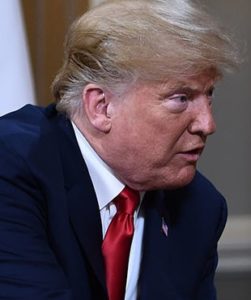Steve Merelman, a friend I worked with years ago at The News & Observer in Raleigh, wrote me last spring asking for an unusual favor. Steve, who was an editor at The N&O and is now an editor at Bloomberg, said he had a bright young reporter working for him who had just had his first correction.
“I have often longed to be able to summon Stith on command to teach the young’uns how to properly deploy his 14 colors of highlighter in the service of accuracy,” Steve wrote. “Pat, if you have time, could you type me a note on how you did it?”
* * *

I decided to post my response because it might be helpful to some young newsman or woman and because folks who have heard our president rail against what he calls “fake news” might find it interesting.
Not only do reporters at The New York Times, The Washington Post, The Wall Street Journal, CNN, ABC, CBS, NBC and hundreds of other news outlets, big and small, not make up stuff, they try hard to find and fix errors before they’re broadcast or published.
This is the slightly condensed note I sent Steve’s young’ens.
* * *
“Writing accurately should not be your goal – it should be your minimum standard.”
“Why?”
“The truth is always based on fact but a bunch of facts don’t always add up to the truth. So the goal is not accuracy, that’s the minimum standard. The goal is to find and report the truth of the matter.”
* * *
“To eliminate error you should create multiple lines of defense beginning with the way you report.”
“Repeat after me: You can not explain what you do not understand. You have to keep on keeping on until you understand what you’re trying to explain.”
“That’s where it starts.”
“As you begin to write, don’t guess at anything. Don’t knowingly put error in your copy with the intention of rooting it out later.”
OK, here goes, The Pencil Check:
“I used a pencil and three highlighters, yellow, orange and blue. I always used the same three colors and I always used them the same way.”
“Yellow: I started with the first word in the first paragraph and if it was correct I put a check over that word. I looked at every other word in the first sentence and if I was satisfied that each one was correct I put a check over each of those words, too.”
“If I found an error, I wrote the correction above the word[s] and highlighted the word and the correction in yellow.”
“Orange: If I found something that I knew was incorrect, but I didn’t have the correct information at my fingertips, I marked it with the orange highlighter. If I found a word that I thought was correct, but I couldn’t prove it at the moment, I highlighted it in orange too.”
“Blue: If I came across a sentence, or part of a sentence, that needed to be rewritten, I marked it in blue.”
“The yellow markers HAD TO BE FIXED. Period. The orange markers HAD TO BE CHECKED AND FIXED IF NECESSARY. The blue markers were cosmetic improvements. I fixed those too, but those fixes were optional.”
“When you’re checking each word, you assume nothing. You do not rely on facts you’ve stored in your head — YOU CHECK.”
“You pull the transcript of the tape and you check the quote, word for word. You pull the documents you quoted, or summarized, and you check, word for word.”
“When you’ve check a fact once, like the spelling of someone’s name, you don’t take a pass the next time you see their name – you check it again.”
“And when you finish checking a paragraph, word for word, you read it again, checking sentence by sentence, looking carefully at the tone and context. Have you been fair?”
“You know, of course, that an unfair story is inherently inaccurate.”
“When you are satisfied that the paragraph contains no error and no possibility of error that has not been marked, you put a check in the margin beside that graph and move on to the next one.”
“When you have finished pencil checking the story you begin making the corrections.”
“You make the corrections, and rewrites, on the electronic copy and mark it so your editor can easily reedit the story. And as I made each correction I make a check with a red marker on the hard copy.”
“You know what always amazed me? In spite of all the care I took assembling a story and all the editing that had already been done – I still found errors when I pencil checked. Every time.”
NOTE1: I worked full time for The Charlotte News from 1966-71 and for The N&O from 1971-08, when I retired. For most of that time, about 35 years, I was an investigative reporter.
NOTE2: Regular readers have, no doubt, spotted errors in my blog stories — dropped words, misspelled words, wrong verb tense, and so forth and so on. How can that be, if I pencil checked it? That’s easy. I don’t pencil check the blog. I’m retired.
Coming Friday: The Most Beautiful Trail In America
Every day is a Sunday….continue to enjoy retirement and please continue your great blog.
Eric Gunderson
Retired, Credit Dept of the N&O.
Thank you.
I checked my story list the other day and I think I’ll be able to post for another year, longer, maybe, depending on how many stories I come across in 2019.